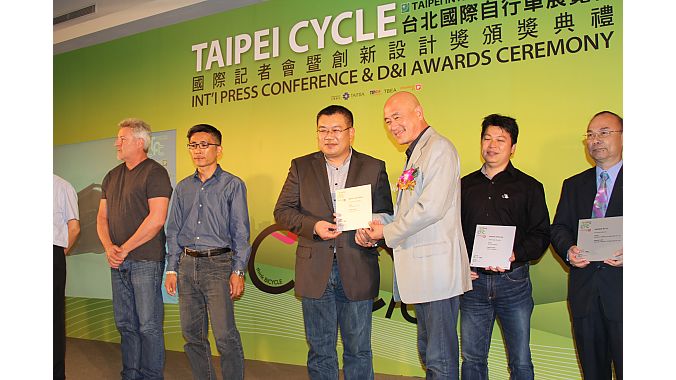Editor's note: Download: BRAIN's Taipei Cycle Show Day 1newsletter (pdf).
TAIPEI, Taiwan (BRAIN) — Last year was a tough one for Taiwan exporters as they continued to see bike shipments to Europe—its biggest market, representing 58 percent of export volume and 45 percent of export value—decline. But strong business in North America and Asia helped mitigate some of that loss. And export values continue to rise.
Walter Yeh, executive director of the Taiwan External Trade Development Council (TAITRA), said exports of complete bikes rose 8 percent in value to top $1.8 billion last year. The average per-unit value increased nearly 10 percent to $417 from 2011’s $379.
Yeh, who presented the latest export numbers to a room full of journalists on the eve of Taipei Cycle’s 26th show, said the export value of parts and accessories also jumped 18 percent last year to $925 million.
Combined, exports of bikes and parts totaled $2.7 billion in 2012, up 11 percent from 2011, and Yeh forecasted exports would top $3 billion this year.
The rise in values is especially noteworthy since complete bike shipments last year remained mostly flat at 4.3 million.
While North America, Taiwan’s second-largest market, had healthy gains last year, exporters continue to look at emerging markets such as China as offering the biggest potential for growth.
“China has 1.3 billion people, and since about three years ago it’s developed into a recreational market,” said Tony Lo, chairman of the Taiwan Bicycle Exporters’ Association (TBEA) and CEO of Giant Manufacturing. “It represents new potential for the bike business. The Chinese market provides new momentum for global players.”
In 2012, Taiwan exported 94,200 bikes valued at $45.29 million into China, increases of 179 percent and 158 percent, respectively, over 2011. And the Chinese are demanding higher-end bikes, with the average unit price reaching $480.
Other growing export markets for the island nation include Japan, which imported 304,000 bikes valued at $118 million last year; Russia, which brought in 48,200 bikes valued at $13 million; Brazil, with 24,800 bikes valued at $12 million; and Malaysia, with 12,000 bikes valued at $7 million.
But Taiwan aims to expand beyond its manufacturing strengths. TBEA’s Lo said a forum during the first day of the show will discuss efforts to turn Taiwan—which boasts more than 3,000 kilometers of cycling paths—into a cycling destination. Officials are also working to make it more eco-friendly with a growing network of orange and yellow rental bikes in the island’s capital of Taipei.
More than 7,000 buyers are expected to walk the floors of Taipei Cycle. The bike show has grown every year since its launch in 1988, Yeh said.
This year, 1,100 exhibitors, about a quarter from overseas, are spread out over more than 600,000 square feet in the Nangang Exhibition Hall and the Taipei World Trade Center.
Yeh said he expected Taipei Cycle to generate $300 million in business over the show’s four days.




